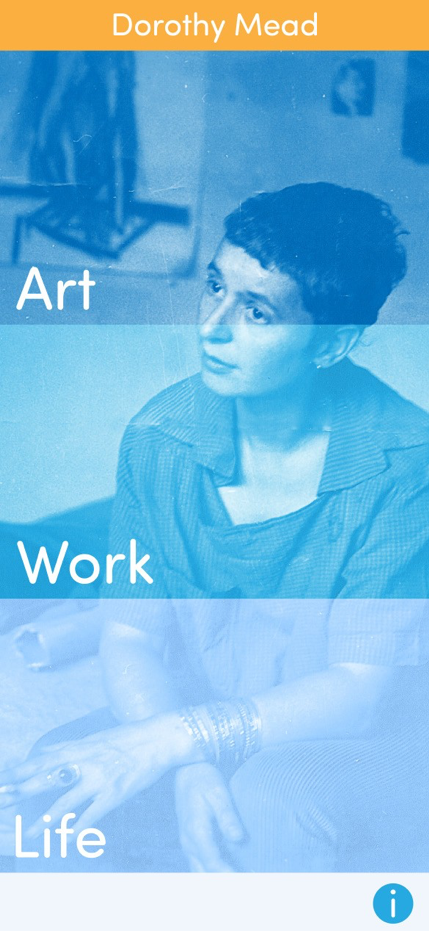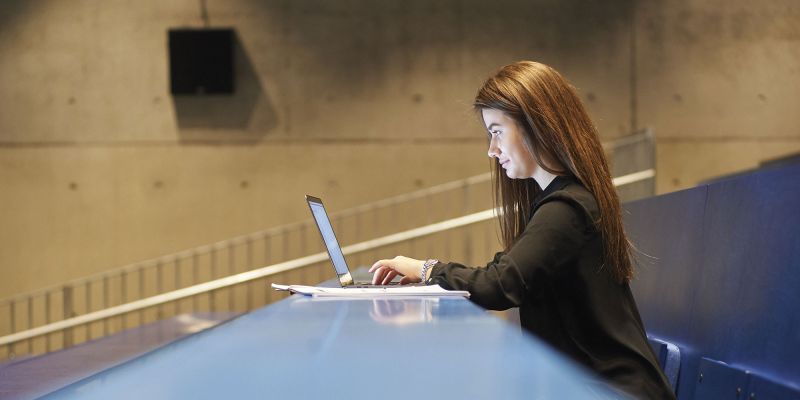 Over the last eight years, Dr Ana-Maria Herman, Associate Professor in HE Learning & Teaching, has been creating apps that feature women artists through collaborative work with libraries, galleries, museums, and other cultural institutions. Her research has explored if and how apps can raise the spotlight on current and past women artists – particularly as women’s art has been often ‘hidden’ in archives, was little discussed in historical art books and has been historically less exhibited than those by male contemporaries. Her research on apps also follows her early doctoral work that explored how museum practices (such as curation, display, visiting and management) are changing in relation to apps – the topic of her book entitled Reconfiguring the Museum: The Politics of Digital Display.
Over the last eight years, Dr Ana-Maria Herman, Associate Professor in HE Learning & Teaching, has been creating apps that feature women artists through collaborative work with libraries, galleries, museums, and other cultural institutions. Her research has explored if and how apps can raise the spotlight on current and past women artists – particularly as women’s art has been often ‘hidden’ in archives, was little discussed in historical art books and has been historically less exhibited than those by male contemporaries. Her research on apps also follows her early doctoral work that explored how museum practices (such as curation, display, visiting and management) are changing in relation to apps – the topic of her book entitled Reconfiguring the Museum: The Politics of Digital Display.
Dr Herman’s first prototype app, the WAL App, was a collaboration with the Women’s Art Library and it displayed artworks by seven contemporary artists that are featured and form part of the special collections and archives at Goldsmiths Library: Marcia Bennett-Male, Kim Thornton, Claire Collison, Angela Edmonds, Kathleen Fox, Caroline Hands, and Freddie Robbins. Her second project, +Archive: Dorothy Mead app, was a collaboration with the Borough Road Gallery at the School of Arts and Creative Industries at London South Bank University. It displays works by Dorothy Mead (1928-1975) - a founding member of the Borough Group (a collective of artists in South London).
Most recently, Dr Herman released the +Archive: Gwen John app displaying works from diverse collections including the Tenby Museum and Art Gallery, Sheffield Museums, Tate, National Library of Wales and Yale Center for British Art. It features 37 images of Gwen John’s (1876-1939) artworks and two photographs illustrating aspects of her life. Both Dorothy Mead and Gwen John were historically overlooked - Dorothy Mead's contemporary, David Bomberg, was awarded more attention and important exhibitions, while Gwen John's brother, Augustus is still better known and valued in the art world. The apps therefore attempt to respond to historical imbalances by bringing attention to issues of representation, and also by highlighting women’s contributions to artistic techniques, the art world and society.
While technologies offer one way to bring attention to women artists, Dr Herman is now looking to answer a bigger picture question: how can (more) women artists ‘succeed’ in the art world? Funded by a BA/Leverhulme Small Grant, she is analyzing a unique archive to trace how Judy Chicago navigated her 60-year career by overcoming art world biases and life’s challenges.

